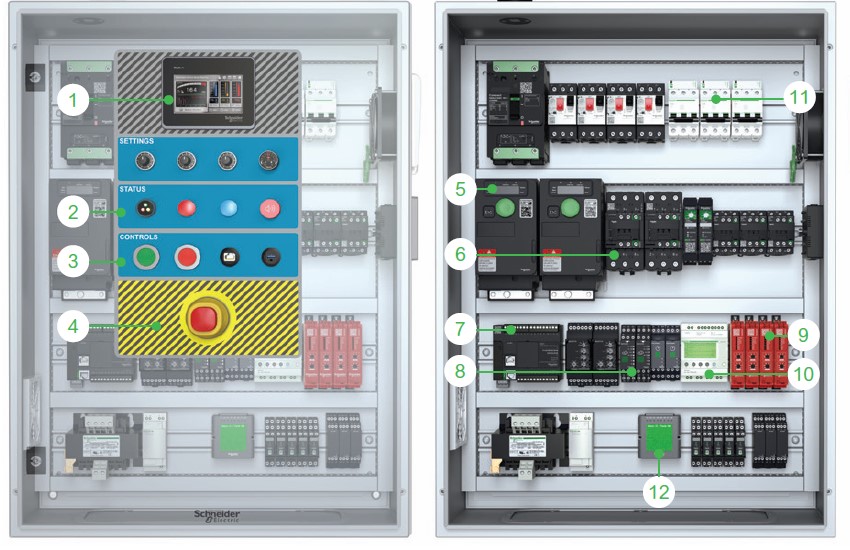Schneider technical guides for control panels reduce complexity

When considering Smart Machines and IIoT it is simple to forget that digitisation must be compatible with power switching devices. It means automation control panels have become more complex and harder to design and build. They may be smaller, needing better thermal management and often harder/slower to wire. This has led to the adoption of new tools to help machine builders improve design, build, install and commissioning. Schneider technical guides help engineers to re-evaluate the components and devices they use.
Functionally, contactors are pretty much the same, but the leading producers continue to refine their product and accessory performance for ease of use, as with TeSys product range. It is important for engineers to recognise the benefits of both core products and their installation accessories. Interestingly, whilst installation accessories appear in the maker’s control catalogues they are not always selected, even though using them is key to maximising installation savings. Schneider technical guides for control panels by highlighting the product benefits.
Schneider technical guides
Selecting the most appropriate components can be a challenge for designers, especially when dealing with control panel size and assembly constraints. To help understand their full product benefits, Schneider Electric produces a series of downloadable control panel technical guides on its website. For example, the “How to quickly optimise contactor assemblies” helps users choose a TeSys solution.
Whilst these components are in the general catalogue, the guide organises and simplifies the information with added functional detail. It also addresses pre-cabled solutions and mono-block assemblies, components and kits designed for customer assembly based on TeSys K, D and F contactors. The guide offers users two ways to find information on the products; by application and by contactor type. Additionally, a complete index by catalogue number makes it easy to go right to the information.
Small feature: big difference
Power connections are a main cause of electrical fires and using Schneider’s patented ‘Everlink’ connectors mitigates this risk. Using Everlink power connectors means devices are easy to wire and mount.
Everlink’s integrated sprung connector compensates for loss of connection pressure due to vibrations or copper creep. Besides being finger proof, Everlink terminals are up to 50% faster than traditional crimping, securing and mounting. Everlink features on the TeSys D, TeSys GV3, TeSys GV4, ComPact NSXm and PowerPact B product ranges.
Bigger things make a difference too.
Machine and control technologies are adopting more modular systems that include communication and diagnostic technologies. Products like TeSys Island make it simpler to tie together programmable devices with breakers, smart contactors, starters and drives.
TeSys island is an innovative digital load management solution. It provides data for higher machine efficiency, eases servicing and also reduces ter time to market. Its modular, multifunctional system integrates functions inside a control panel for controlling loads. TeSys island can switch, protect, and manage motors and other control panel loads up to 80 A (AC3).
The installation of devices on a single DIN rail controls loads, monitors data, diagnostics information and uses a ribbon cable for communication between modules. External communication with the automation environment connects through a single coupler module, and this means the island appears seen as a single node on the network. The other modules also include starters, power interface modules, analogue and digital I/O modules, voltage interface modules, and SIL interface modules, covering a wide range of operational functions.
Installed on a single DIN rail, devices control loads, check data and diagnostics information. It uses a ribbon cable for communication between modules and external communication connect through a single coupler module. On the network, a TeSys Island appears as a single node. The other modules cover a wide range of operational functions. They include starters, power modules, I/O modules, voltage interface modules, and SIL interface modules.
Open a list of Schneider Technical GUides for Control Panels here.
Recent blog posts
